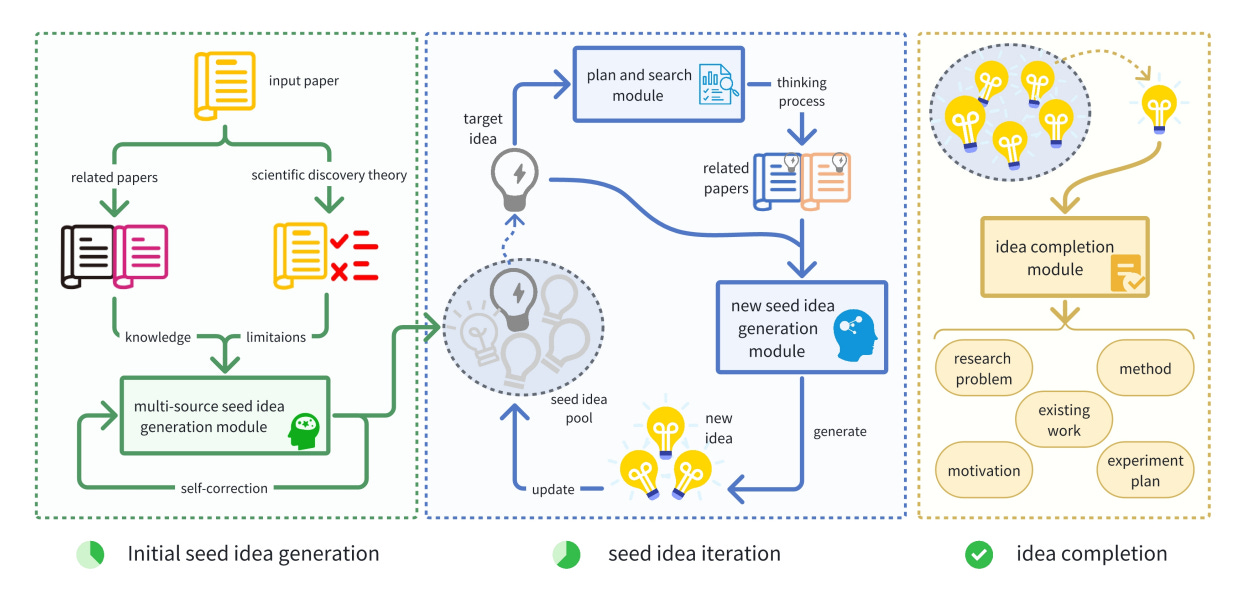AI for Science: How to turn your LLM into an Innovation Machine
The Power of Iterative Planning and Search in LLM-Based Scientific Innovation
Large Language Models (LLMs) have demonstrated remarkable capabilities across various domains, including scientific innovation. By harnessing the power of these models, researchers aim to accelerate the discovery process and generate novel research ideas. However, existing LLM-based methods often struggle to produce truly diverse and innovative concepts due to their limited ability to acquire and integrate external knowledge effectively. To address this challenge, a new approach called Nova has been introduced, which combines iterative planning and search to enhance the creative potential of LLM-based systems.
The Nova Pipeline: A Three-Stage Approach to Scientific Innovation
The Nova pipeline streamlines the research process through three key stages: initial idea generation, iterative refinement, and detailed completion. This systematic approach ensures that the generated ideas are not only novel but also well-developed and feasible.

Stage 1: Initial Seed Idea Generation
The first stage of the Nova pipeline focuses on generating diverse and novel seed ideas based on an input paper. To achieve this, the system employs a multi-source seed idea generation module that leverages the LLM's internal knowledge, related literature, and scientific discovery techniques.
One of the key components of this module is the knowledge tracking system, which addresses the shortcomings of previous approaches by monitoring the latest publications in the field. By identifying influential recent papers based on user engagement metrics across various platforms, such as social media, forums, and GitHub, Nova ensures that the generated ideas are informed by the most current insights.
To further increase the diversity of the generated ideas, Nova utilizes 10 fundamental scientific discovery methods derived from Kuhn's paradigm of scientific discovery. These methods help identify new research problems by analyzing anomalies in existing approaches, exploring theoretical boundaries, and integrating interdisciplinary knowledge.
Additionally, Nova employs self-correction mechanics, such as self-check, self-critique, and reflection, to prevent hallucination and improve the logicality of the generated seed ideas. By the end of this stage, the system generates 15 seed ideas for each input paper.
Keep reading with a 7-day free trial
Subscribe to LLM Watch to keep reading this post and get 7 days of free access to the full post archives.

